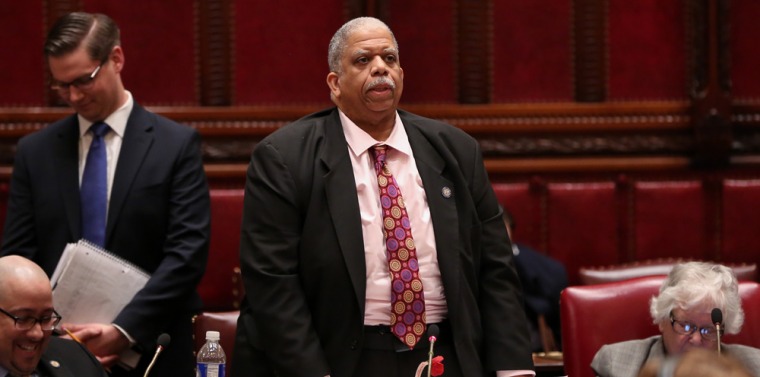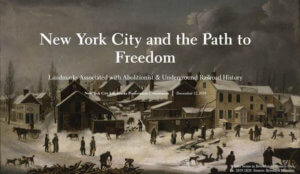State Senator Leroy Comrie’s legislation that would establish a commission to develop and carry out activities throughout New York to commemorate 400 years since the arrival of the first enslaved Africans in the English colonies, was signed into law by Governor Andrew Cuomo.
The 400 Years of African-American History Commission was announced around the same time the city’s Landmarks Preservation Commission launched an interactive map called New York City and the Path to Freedom, which chronicles the important role the city played in the effort to abolish slavery nationwide, and assist those seeking to escape it.
“Chronicling and giving voice, resonance and significance to the immense, pioneering and worthy contributions of African-Americans over the past four centuries is not only necessary from the standpoint from the standpoint of understanding the past, but even more critical for inspiring the future,” Comrie said. “This legislation is timely and needed now more than ever, both to respond to current conditions in society and to ensure that successive generations of brave, heroic and emboldened African-Americans are remembered and celebrated.”
The commission will consist of 15 members selected by Cuomo and legislative leaders as well as the Secretary of State and Commissioner of Education.
“This landmark anniversary is an opportunity to once again reflect on the evils of slavery and to honor the struggle and triumphs of centuries of African-Americans who have fought against barriers of racial discrimination and enriched and enhanced the fabric of our country,” Cuomo said. “The resilience, bravery and contributions of African-Americans will be preserved for our memory by this Commission so that New Yorkers never forget their stories or sacrifice.”
The LPC wanted to bring greater awareness to the city’s abolitionist history by telling the story through designated landmarks that embody it. Through narrative text, images, maps and multimedia content, the public can learn the important history behind these buildings.
“The designated landmarks highlighted in this story map form an impressive collection of physical spaces that help tell the story of abolition and the Underground Railroad in New York City,” Landmarks Preservation Commission Chair Sarah Carroll said. “As we reflect on New York City’s legacy of both slavery and abolitionist activities, I hope New Yorkers will be inspired by the stories of abolitionists who took great personal risks to house enslaved individuals and to publicly advocated for abolition.”
Until slavery was abolished in New York in 1827, Long Island, including Queens County, had one of the largest populations of slaves in the North and pockets of abolitionist activity nonetheless thrived, particularly in the progressive Quaker community of Flushing. The story map highlights two designated landmarks in Queens, the Friends Meeting House, also known as the Old Quaker Meeting House, located at 137-16 Northern Blvd. in Flushing, and the Bowne House at 37-01 Bowne St. also in Flushing.
“New Yorkers will now have an interactive guide to discovering our city’s contribution to the Abolitionist movement,” Deputy Mayor of Housing and Economic Development Vicki Been said. “I want to commend the Landmarks Preservation Commission for moving beyond a plaque to developing the story map, which gives viewers a deeper understanding of the importance of history and place.”
Explore the New York City and the Path to Freedom story map here.


































